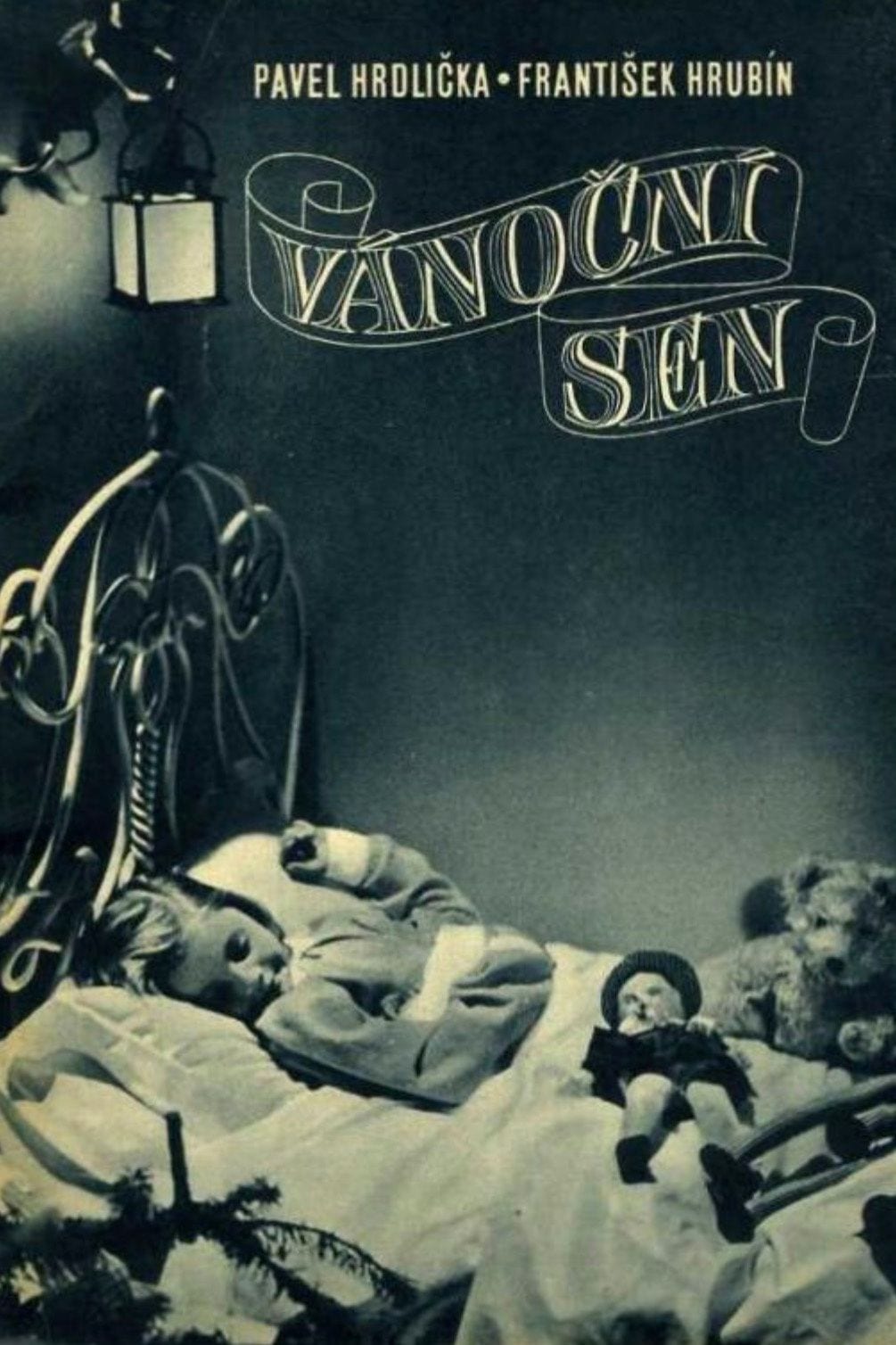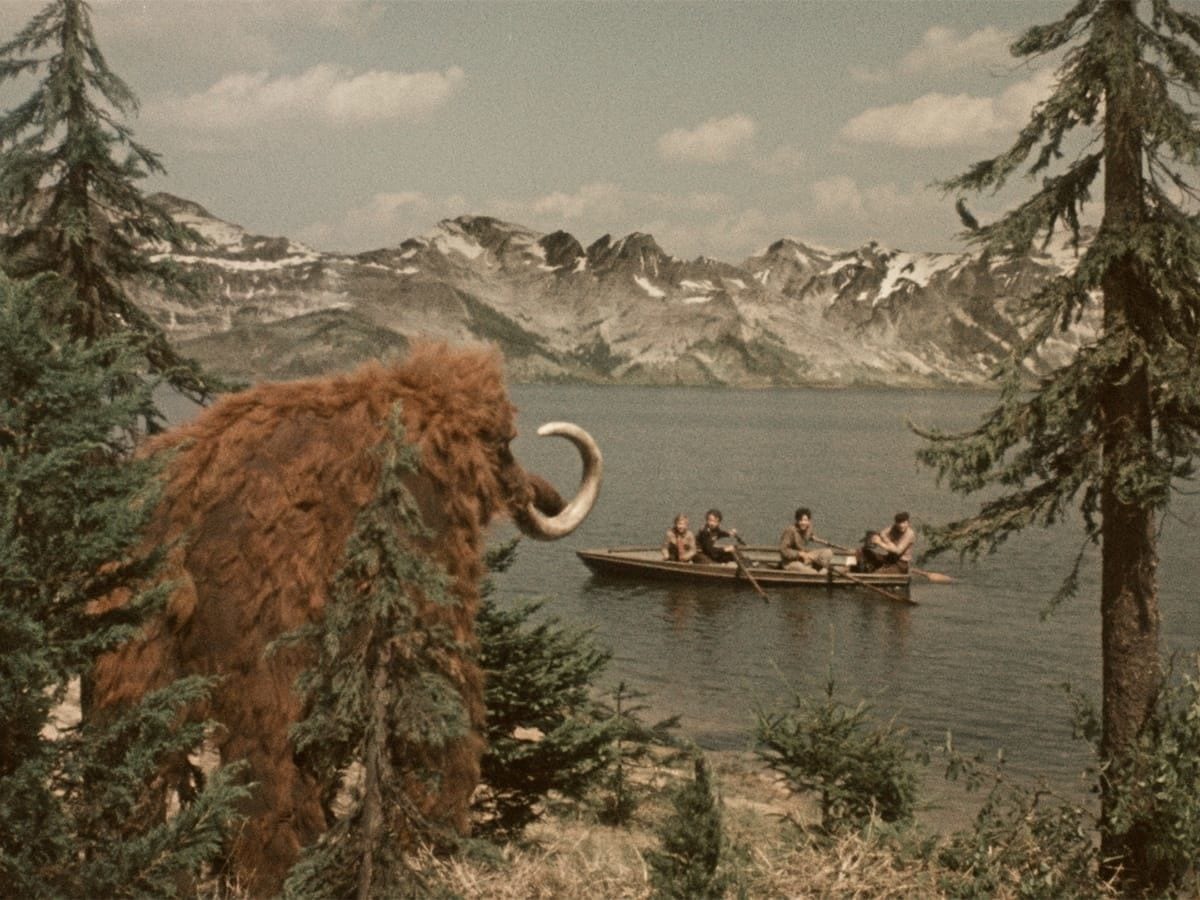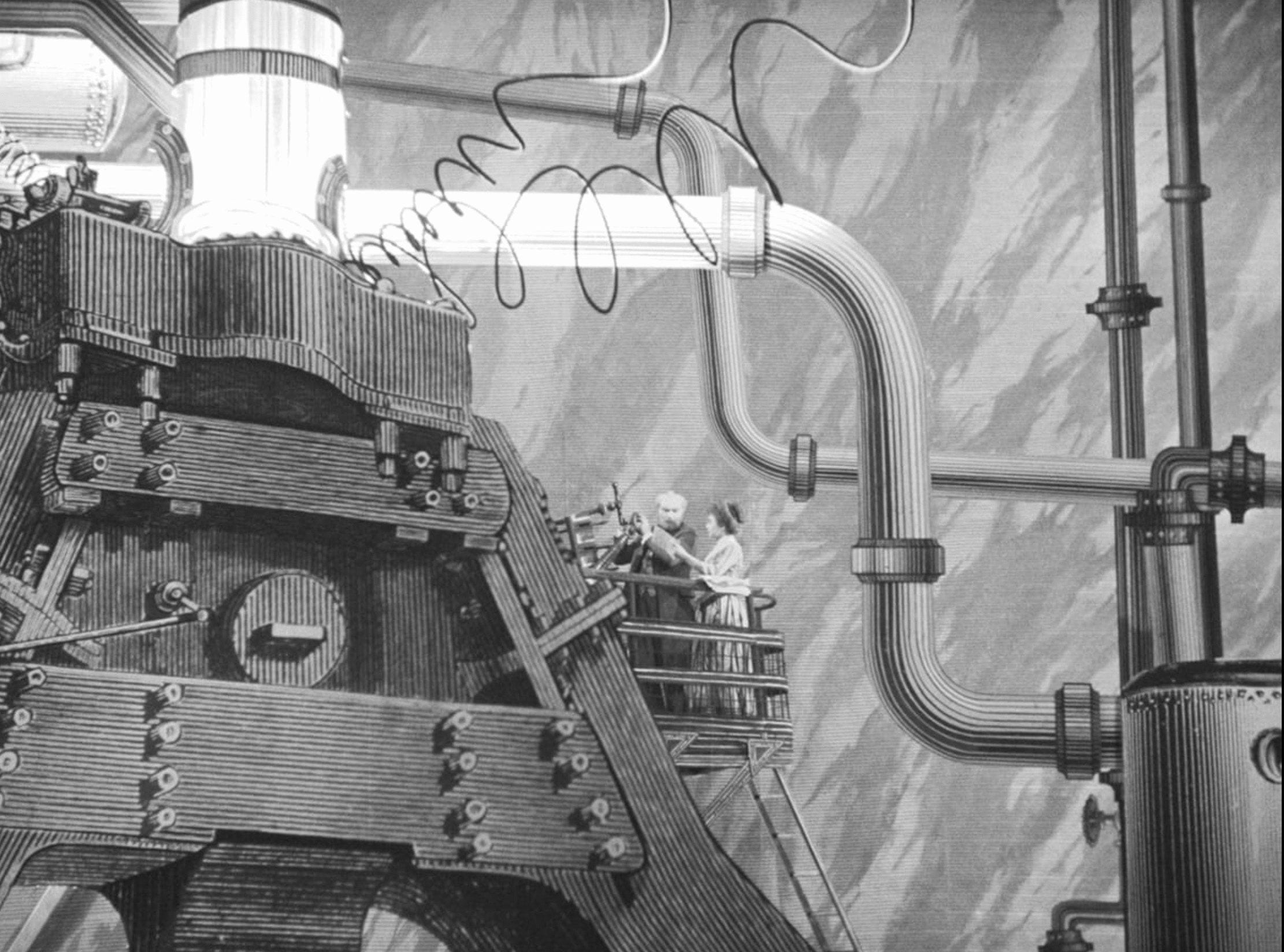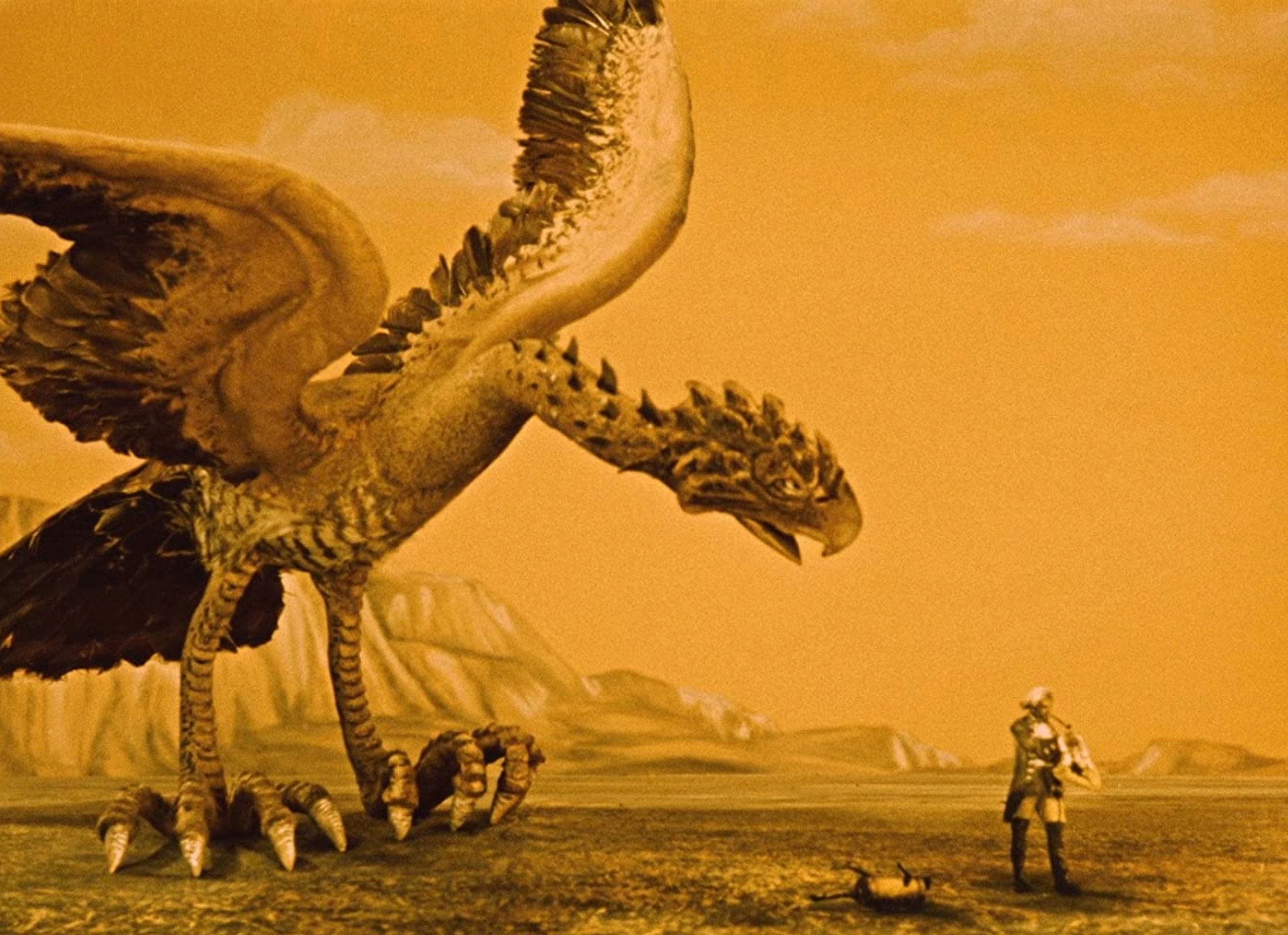
Let the celebrations begin. The work of Karel Zeman is among the wonders of animated and imaginative cinema, and this Criterion Blu-ray is long overdue. The first thing to notice about Three Fantastic Journeys by Karel Zeman is the colorful die-cut cardboard with pop-up designs for each of three discs. This packaging would deserve an award even if the movies were lousy, and they’re not.
Who Was Karel Zeman?
In the 1920s and ’30s, Zeman began learning animation, usually in his spare time, while working in the French advertising industry. After many travels, he returned to his native Czechoslovakia (though he was born in what was technically Austria-Hungary) to continue in advertising. He found himself working in a country taken over by Nazis and later by the Russia-dominated Communist Party.
Zeman quit a prestigious job with the world’s largest shoe manufacturer to enter the film industry when his home-made animations impressed Elmar Klos, a director best known for the Oscar-winning The Shop on Main Street (Obchod na korze, 1965). Zeman apprenticed with Hermína Týrlová, a pioneer in Czech puppet animation.
In terms of stop-motion puppetry applied to literary and fanciful stories, Zeman belongs to a tradition including Hungary’s George Pal, who’d established himself in Hollywood, and Zeman’s compatriot Jiří Trnka. However, Zeman is distinct. He worked in many modes, from drawn animation to live action, and he created a unique vision of combining live actors with elaborate effects in ways that make 19th Century engravings appear to come alive.
As the extras indicate, he influenced everyone from Terry Gilliam to Tim Burton, and his stamp can be seen on the output of Jan Švankmajer (yet another Czech — something in the water?), the Brothers Quay, and animator Lawrence Jordan’s recycling of classic 19th Century imagery. These artists show a tendency to resurrect the “out of date” and radiate a vibe of being lost in time, of seeking refuge from the modern world.
Four Shorts from Zeman
 (IMDB)
(IMDB)
Included among the bonuses on this set are four early dialogue-free shorts, beginning with A Christmas Dream (Vánoční sen, 1945). Týrlová had just made a version that was destroyed in a fire before its release. This instant remake is credited to Karel’s brother Bořivoj Zeman as writer-director, while Karel was responsible for the stop-motion animation.
The premise finds a little girl tossing aside her old rag doll for new Christmas dolls. The old doll comes alive in her dream, dances around and turns on the fan to stage a whirlwind. She awakens to realize that old handmade and historical items should be treasured — a major theme of Zeman’s output. An altered version of this film was released in the US in 1948, adding some dialogue and footage of Santa Claus.
A recurring image of Zeman’s inspiration can be found in the girl’s unrestrained joy when she jumps up and down on her bed. Zeman’s output aims to capture childhood joy and wonder at the world, a product in preciously short supply in popular art, which is usually made by people who wish to project sophistication and maturity.
According to a bonus feature-length documentary on Zeman’s life and work, this short won a prize in the competition of shorts at the first Cannes Film Festival, held in 1946. In fact, it was among seven prize-winning shorts from 55 entries. Among the seven co-winners was a film by Zeman’s contemporary in Czech animation, Jiří Trnka. By the way, non-winners included Jean Renoir’s A Day in the Country (Un Partie de campagne), completed in 1946 from footage shot in 1936, and Don Siegel’s Oscar-winning Hitler Lives (1945).
As animator John Stevenson observes in a bonus appreciation, Zeman differs from similar stop-motion giants like Willis O’Brien and Ray Harryhausen in that while they strove to make viewers believe in the “reality” of their visions, Zeman emphasizes the artificial, unreal, “pretend” nature of his devices. His dazzling technical sophistication is applied to effects that call attention to themselves as “naive” or “quaint”, and these elements increased as he became more adept and famous. In this regard, Zeman feels like a successor to the equally brazen artifice of Georges Méliès, with whom he’s often compared.
Horseshoe for Luck (Podkova pro štěstí, 1946) is the first of Zeman’s nine films about Mr. Prokouk, a wooden puppet with a long nose, a mustache, a straw boater and what look like pipe-cleaner arms. His little mishaps with a horseshoe become a public service announcement for recycling materials to help new industry, and thus the film justifies itself as more than mere bourgeois trivia in the new workers’ state.
The other Prokouks have the same mix of slapstick and didactic messaging. Zeman’s experience must have inspired the satirical clips we see of one where Prokouk tries to pitch an idea for filmmaking and gets tossed out on his ear.
When challenged by a colleague to use glass figurines for animation, Zeman created the drop-dead dazzling Inspiration (Inspirace, 1949) in color. The technical jaw-dropper here is that glass artists had to blow new figures for every pose adopted by the characters.
Here’s another film about creative imagination and things that shouldn’t be forgotten, as an artist imagines the classical Italian Pierrot clown breaking through a glass or ice wall (an iron curtain?) in search of his beloved dancer. Here Zeman expresses his allegiance with traditions of an older, broader Europe.
The half-hour King Lavra (Král Lávra, 1950), also in color, illustrates a poem by a 19th Century Czech writer about a king with donkey ears who routines executes his barbers when they learn his secret. The barber eventually commits himself to a life of music, preferring humble art to royal favor. There’s a lesson in there somewhere.
Journey to the Beginning of Time (Cesta do pravěku, 1955)
 Journey to the Beginning of Time (Criterion)
Journey to the Beginning of Time (Criterion)
The first of the set’s three fantastic journeys is Zeman’s second feature. Journey to the Beginning of Time is a color film seemingly conceived as a simple showcase for something Zeman wanted to try: the combination of live action with stop-motion animation and occasional puppets in the form of a children’s adventure film.
The story begins with a boy looking through a notebook that documents his summer vacation, when he went back in time with three buddies. They got the idea when the youngest lad found a trilobite fossil near the mouth of a cave at a river. The boys calmly set about loading a rowboat with supplies and journey into the cave, somehow coming out the other side upon a fantastical landscape in which they kept traveling further back in time as they headed east, or at least from left to right on screen. No further explanation is necessary.
The journey is partly a science lecture explaining the different eras and types of life to be found there, so an elevated educational element exists. This trip through time isn’t only fun, it’s good for you, and therefore this film isn’t mere escapism. The authorities were less heavy with children’s films, which could be lighter than serious adult dramas, but we can’t help thinking Zeman was mindful of constructive messaging.
So much for that. This is a movie about dinosaurs. We see a big fight between a stegosaurus and a large predator, a ceratosaurus; such fights were par for dinosaur movies, and Zeman doesn’t neglect it. We see mammoths, pterodactyls, a triceratops and a brontosaurus. We don’t see a caveman but we visit his cave and look at his wall paintings. Don’t worry, this is all presented in proper reverse chronological order until we get to the era of swampy jungles and small fauna and finally arrive at an ocean with the earliest seaweeds and trilobites washing up on shore.
The boys and animals are sometimes presented in the same shot via in-camera matting where the boys are in the bottom half of the screen while the stop-motion models of animals are shot over the top half. As far as plot incidents go, now and then one of the boys will wander off for a few minutes and cause the others some alarm until he returns. Then they pick up their new trilobite and go home in the opposite direction, mission accomplished.
This is the most seamlessly realistic and Harryhausen-esque of Zeman’s features, calculated to fool the eye into reality, whereas his next films evolved into more self-consciously artificial spectacles.
The movie has obvious roots in Jules Verne’s Journey to the Center of the Earth (1894) and later books it inspired. One of those later books is Arthur Conan Doyle’s The Lost World (1912), whose 1925 film version showcased stop-motion effects by Willis O’Brien, and a new film version was coming up in 1960. Verne was among the lodestones of Zeman’s career, and this was the moment for it.
Verne was a hot cinematic property, thanks to such hits as 20,000 Leagues Under the Sea (1954), directed by Richard Fleischer for Walt Disney, and the Oscar-winning Around the World in 80 Days (1956), directed by Michael Anderson for Michael Todd in Todd-AO 70mm, and Zeman’s personal taste put him in a happy position to ride that wave.
As on the other two features in this set, the 4K scanning and restoration is the work of the Karel Zeman Museum, founded in 2012 to restore and promote the master’s work. The results are dazzling, a word that can’t be used too often to decribe Zeman, perhaps because of the Zs. Included with all three films are brief segments on the restorations and how some of the effects were done, sometimes with archival footage on the same. A point is made that the archival behind-the-scenes footage can’t always be trusted, for Zeman’s whimsicality extended to these demos, as seen in the footage about the stegosaurus model.
A nice extra is a Library of Congress print of the 1960 English-dubbed US release. This version, produced by William Cayton and cut into segments for syndication as a serial to local children’s TV programs, opens with new footage in which the four boys (not the same actors, but dressed the same and seen only from the back) visit New York’s American Museum of Natural History and get hypnotized by a statue of an Indian medicine man into imagining the rest of the movie.
In a bonus discussion, animators Phil Tippett and Jim Aupperle recall seeing the film in this manner. Aupperle holds up a book featuring the paintings of Czech artist Zdeněk Burian whose visual concepts were used in the film.
Since the English version converts the story to an all-American tale, the ending gives us abstract crystal imagery in which our narrating eldest boy quotes from Genesis about God creating the Earth, something avoided in the strictly scientific Czechoslovakian version made under official atheism. Then the American boys wake up and realize the whole adventure was a weird fugue state.
Another interesting cultural difference can be found in the narration about the caveman. While the Czech boys are initially uneasy about the possibility of running into him, his artworks make them realize he’s human like them. The American boys register the art but remain wary of running into a savage Other.
Invention for Destruction (Vynález zkázy, 1958)
 Invention for Destruction (IMDB)
Invention for Destruction (IMDB)
Invention for Destruction announces itself as “freely adapted from the works of Jules Verne” and even seems to be taken directly from the 19th Century engravings in those books, complete with lines of hatching across the texture of the ocean waves and backgrounds. Having already demonstrated his abilities in color, Zeman chose to make this film in black and white to accommodate this defiantly retro vision.
The viewers feel as though we’re watching actors wander among these illustrations, which have somehow come to life through matting techniques, painted backgrounds, and foregrounded cut-outs to complex effect. The results are hypnotic and leisurely, giving us plenty of time to live in this slowed-down world of fantastic adventure.
The story follows the kidnapping of a brilliant but naïvely trusting scientist (Arnošt Navrátil) working on a process of great destructive potential, although this doesn’t concern him because he says its uses will be up to technicians and politicians. He doesn’t realize that the wealthy Count Artigas (Miloslav Holub), an aristocrat-capitalist who provides a lab in a dormant volcano like future James Bond villains, intends like all megalomaniacs to take over the world. Thus, the film’s moral sensibilities encompass the very recent past and forebodings of the atomic future while being set in an era not only vanished but in some respects never existent.
The bland romantic leads are the professor’s dashing assistant (Lubor Tokoš) and a crinolined shipwreck survivor (Jana Zatloukalová), who helps in a pinch. Whether fleeing a sinking ship (stopping to free a bird from a cage) or donning an aeronaut’s uniform, she has the sang-froid of Diana Rigg’s Emma Peel on The Avengers, a TV series still several years in the future. She doesn’t employ the martial arts, however.
One of the film’s paradoxes is that the plot is a farrago of hectic adventure with shipwrecks and explosions and the like, yet the pace and acting style are as calm and formal as the couple’s impeccably proper relationship, with not a hair out of place nor any pulse quickened. Viewers need that breathing space to stare at the film’s eye-popping constructed world, with its animated fish, its light-air balloons, its giant cannons, its mega-octopus, and those endless dizzying hatch-lines.
According to the documentary, this film played in dozens of countries and at one point was in 96 theaters in New York. Americans saw a dubbed version called The Fabulous World of Jules Verne (1961), and that soundtrack option is here along with the alternate English opening. It’s a very pleasant viewing option, and the general lack of speaking close-ups within the formalized presentation means the professional dubbing isn’t distracting.
The Fabulous Baron Munchausen (Baron Prášil, 1961)
 The Fabulous Baron Munchausen (IMDB)
The Fabulous Baron Munchausen (IMDB)
This one’s a doozy, like the previous feature to the tenth power with the addition of color. In an evocative opening that modestly forecasts the prologue of Stanley Kubrick’s 2001: A Space Odyssey (1967) boiled down to a minute, the film goes from footprints in the mud on Earth to an endless upward leap through miles and history, zooming beyond birds to airplanes to supersonic jets to rockets until we land on the moon — where a bewildered astronaut discovers a trail of footprints and a gramophone.
Our spacesuited explorer is Tonik (Rudolf Jelínek), and he soon discovers that the moon is populated by previous visitors from works of imagination, all without spacesuits. He meets Verne’s travelers of From the Earth to the Moon (1865, and Byron Haskin had just directed a 1958 film version). He meets Cyrano de Bergerac, a real-life person who cast himself as a fictional lunar explorer in an early science fiction novel published in 1657.
And then there’s Baron Prášil (Miloš Kopecký), a Czech name for the famous fictional character of Baron Munchausen, also based on a real person. The subtitles call him Munchausen although that name isn’t spoken in the picture. The Baron disbelieves that his “little Moonman” could be from Earth, and explains “I’ve never seen you there.” Appointing himself to show the Moonman the wonders of Earth, the Baron loads Tonik onto his galleon powered by winged horses (oh beautiful! oh sublime!) and flies to Earth after tossing overboard the spacesuit and giving Tonik clothes to look human.
The Earth upon which they land is an 18th or 19th Century phantasmagoria of more mattes and cut-outs based on classic engravings and enlivened by a variety of — we have to say it — dazzling effects. Although this film is in color, only a few moments are what we might call regular color. Most shots are tinted in one single color or another, like silent films. The illustrator Gustave Doré is sourced in the opening credits as one of the inspirations along with author Gottfried August Bürger, and this requires some explanation but let’s table it for a moment.
The episodic plot begins with rescuing a phlegmatic European damsel, Princess Bianca (Jana Brejchová), from the tower of a fairy-tale Turkish sultan (Rudolf Hrušínský). Look away if you’re allergic to never-never Oriental stereotypes, although that’s this movie’s equivalent of a multiculturalism in which everyone is absurd and two-dimensional.
Bianca will be a source of mild contention between her two gentlemanly heroes, though her preference for the young handsome Moonman is never in doubt. While the Baron deplores his Moonman’s weakness for logic and science, which would cause Tonik to miss the world of flirtatious witches and mermaids, the movie will imply that our scientifically-minded explorer is as much a dreamer and adventurer as his would-be mentor.
The plot moves on to getting swallowed by a giant fish and the Baron’s famous adventure of riding a cannonball in one of two segments that function as a parody of military adventure. Once again, as in Invention for Destruction, the story includes a colossal explosion while sweethearts flee in aeronautical garb. And as on Journey to the Beginning of Time, The Fabulous Baron Munchausen is identified by the title of its dubbed U.S. release, although in this case no English version is offered.
Zdeněk Liška, a composer of lyrical genius who’d scored Invention for Destruction with emphasis on harpsichord, outdoes himself for jaunty joy here, especially in the chase music. Zeman’s daughter Ludmila Zeman, who acted as a riding double in the horse chase, calls this the film’s rock and roll theme.
At this point, Dear Readers, many of you may be wondering “Who the heck is Munchausen?” Today, he’s best known from Terry Gilliam’s The Adventures of Baron Munchausen (1988). Once, he was a ubiquitous figure in the world’s comic literature, a by-word for the lying braggadocio of entitled, privileged aristocrats with penchants for dueling, hunting, and military adventure. In short, a clown and a figure of satire. More recently, thanks to Zeman and Gilliam, he’s evolved into a figure more like Don Quixote, a brazen asserter of imagination, romance and self-invention in the teeth of a dull, petty, bureaucratic world.
There was, in fact, a real-life Baron, and his facetiously narrated tall tales were immortalized by a German rogue who knew a thing or two about fabrication, one Rudolf Erich Raspe. After writing the original stories in German, he fled to England as the result of some proclivities and wrote the first English version, always anonymously to avoid the wrath of the true Baron.
After that point, countless writers in many languages began contributing to the legend, such that an attempt at any complete edition might run to several volumes. Among the most famous of these translator-interpolators is Bürger, listed in Zeman’s credits, who ironically translated the German Raspe’s English back into German.
In any language or by any writer, Munchausen’s impact was enormous. Verne loved him, making him a primary source for one of Zeman’s primary sources. No, two of his primary sources, for Méliès also loved him and made a film about him in 1911. According to Wikipedia’s citation of Elizabeth Ezra’s Georges Méliès (Manchester University Press, 2000), the filmmaker was in discussion with avant-garde artist Hans Richter to make a Munchausen film before Méliès death in 1938. The mind reels.
Munchausen inspired many other films, both animated and otherwise, and two of direct relevance to Zeman are Martin Frič’s Czech comedy Baron Prášil (1940), about a modern descendant (that would have made a great extra), and Hungarian director Josef von Báky’s lavish color German fantasy Münchhausen (1943), made as an escapist distraction by the Nazi industry in the middle of WWII. By a happy synchronicity, the German film has recently been released on Blu-ray by Kino Lorber; keep watching this space for more information.
Perhaps all this recent film restoration will alert cultural spelunkers to Munchausen as one of the key characters underpinning the history of fantastic cinema, and how his iconic type has lent itself to reinterpretation as needed by the whims of history. Some may argue that we’re going through a new Munchausen era, albeit one that seems considerably less whimsical if no less absurd.
These Karel Zeman Museum restorations of Invention for Destruction and The Fabulous Baron Munchausen have previously been issued in the UK as Blu-rays on the Second Run label. As near as I can determine, the extras on those editions are replicated by Criterion except for the booklets and one bonus appreciation of Munchausen. Three three features are, we hope, the beginning of a Zeman revival for viewers in Region 1, for Zeman released seven other features. Those who experience these three will find their mouths watering for more.


![Call for Papers: All Things Reconsidered [MUSIC] May-August 2024](https://www.popmatters.com/wp-content/uploads/2024/04/all-things-reconsidered-call-music-may-2024-720x380.jpg)



